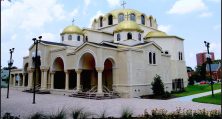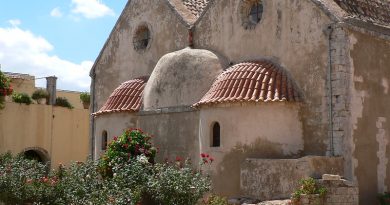The Greek Diaspora
The Greek diaspora, due to its sheer longevity, is one of the more difficult to categorise. It has existed since the days of antiquity and remains widespread in the present day. The major modern centres include the United States (over 1 million), Australia (400,000), Germany (443,000), Canada (270,000) and the United Kingdom (79,000).
Dating back to antiquity, Greek expatriates were widely common throughout the Balkans and Asia Minor. The Greek diaspora reached as far as regions such as Central Asia and North Africa during this period, giving one an idea of its sheer reach. The Greek diaspora continued to spread long after the end of the Hellenistic period. The Byzantine Empire saw a renewed emphasis on Greek culture, and Greeks subsequently enjoyed a privileged status during this period, moving throughout the Mediterranean and the Levant. Following the collapse of the Byzantine Empire and the rise of the Ottoman Empire, the Greeks fled Constantinople and settled in Italy, contributing to the country’s historically Greek population. Greek migration in the following centuries was generally disparate and random, with no major trends emerging.
As the Ottoman Empire began to disintegrate in the 19th Century and Greece ceded from its control during the Greek War of Independence, many communities abroad returned home to help re-establish the state. Greek emigration renewed to a significant extent during the 20th Century prompted by a variety of different factors, including political and economic instability in Greece. The Greek Civil War saw large numbers of Communist Greeks flee for Eastern Europe while others fled the war and disruption for Western countries such as the United States, the United Kingdom or Australia.
USA
The United States has the largest overseas Greek community in the world. Greek settlement in the United States dates back, in large numbers at least, to the mid-19th Century. The first of these settlements was in New Orleans and developed a large surrounding community including a Greek Orthodox Church and a consulate. This was not long after the country’s independence from the Ottoman Empire and was influenced by a desire for a new beginning and the enticing economic benefits of settling in the United States. This trend increased over the following decades and exploded at the turn of the century, influenced by the many conflicts in Europe at the time. It is estimated that 450,000 Greeks arrived in the country between 1890 and 1917. Greeks settled mainly in the Northeastern United States, particularly in New York City and Boston. The initial settlers were overwhelmingly male, although this balanced out as rates continued. Greek immigrants contributed significantly to the spread of Orthodox Christianity throughout the country. New York City and Boston remain the major population hubs of the Greek community, although significant hubs also exist in Chicago, Los Angeles, Washington D.C. and Baltimore.
Australia
The Greek population of Australia is one of the latter country’s most significant immigrant communities. It is heavily concentrated in the city of Melbourne, which boasts the largest Greek-speaking population outside of Athens. Greek immigration to Australia began in the early 19th Century, albeit in a scattered manner.

Ladies | An old toilet sign in port Melbourne from the 1950’s or 60’s, Gabriel White, Flickr Creative Commons
The first Greeks were convicted pirates imprisoned in the penal colony. Eventually pardoned, they opted to settle in Australia. The population increased at the end of the 19th Century, settling in major urban centres such as Sydney and Melbourne. The latter in particular grew into a major outpost for the diaspora, which was growing increasingly massive as internal discord ravaged Greece. The population increased in line with major upheavals in Greece such as the Greco-Turkish War and the Greek Civil War.
It was the aftermath of the Second World War when the country’s Greek population truly exploded. With considerable damage incurred during the Second World War, many Greeks relocated, something which was facilitated in Australia by the ‘Populate or Perish’ immigration scheme, allowing Greeks to migrate easily. With a thriving pre-existing community in Melbourne, this expanded significantly in the latter half of the 20th Century. It has since plateaued, but remains one of the most important in the world.
Great Britain

Greek Orthodox Cathedral of the Holy Cross and St Michael – Golders Green, London, Elliott Brown, Flickr Creative Commons
Britain has one of the largest Greek populations in Europe, with the diaspora having a long and extensive history in the country dating back to antiquity. The modern Greek community in the United Kingdom however had its roots in the 19th Century. This exodus was prompted by a wealth of political factors. The Greek War of Independence caused considerable political upheaval and subsequent population displacement, with many deciding to settle in Britain due to relative proximity and the potential for economic prosperity. London was the main destination, although communities developed in the large cities of Liverpool, Manchester and Glasgow. In London, the neighbourhood of Bayswater developed into a major population enclave. Palmers Green in North London also became a major hub. The population is widely dispersed throughout the country, with a wealth of Greek-owned businesses and restaurants as well as Orthodox churches being present.
The Greek diaspora is, technically speaking, one of the oldest in the world, and one of the most widespread. The modern Greek diaspora has a wide reach throughout the world and has had relatively little trouble assimilating. Its integration in countries such as Australia and the United States has been highly successful whilst managing to preserve its many cultural traditions.
Main Image: Gerald Brazell, Holy Trinity Greek Orthodox Church, Flickr Creative Commons




